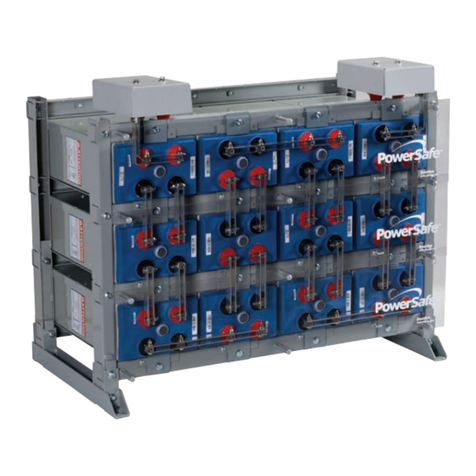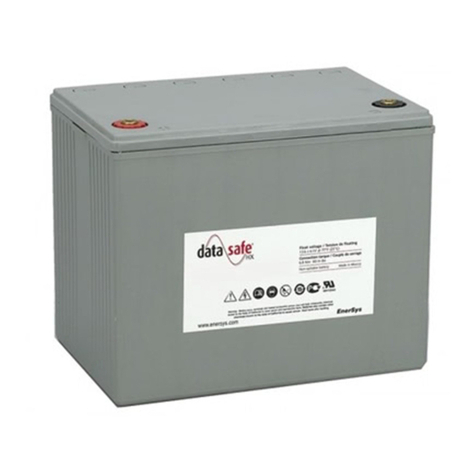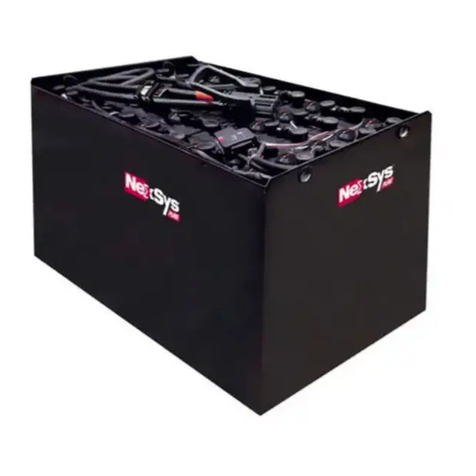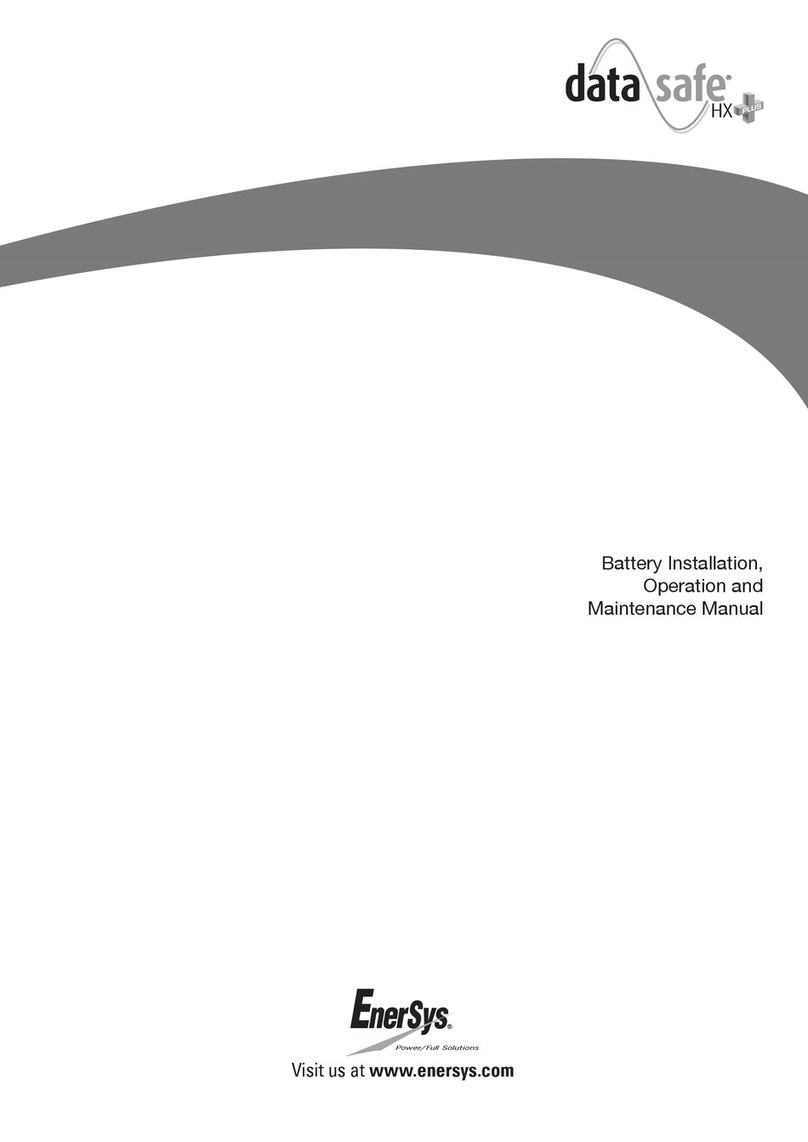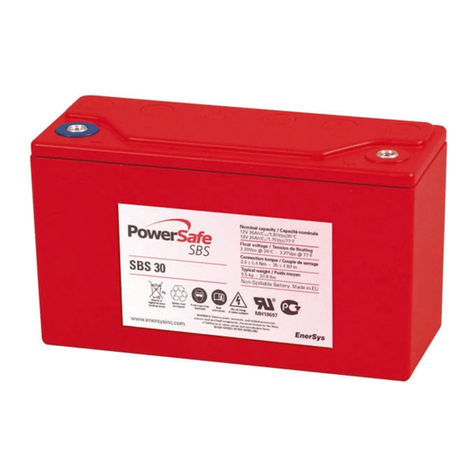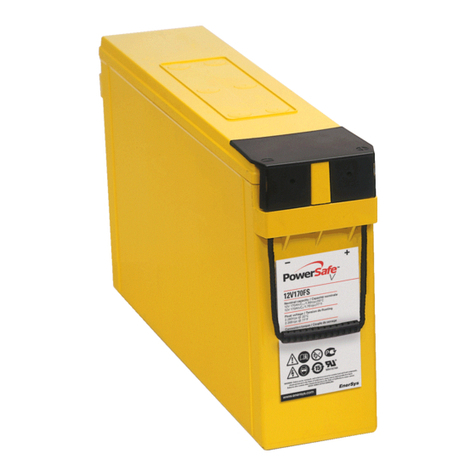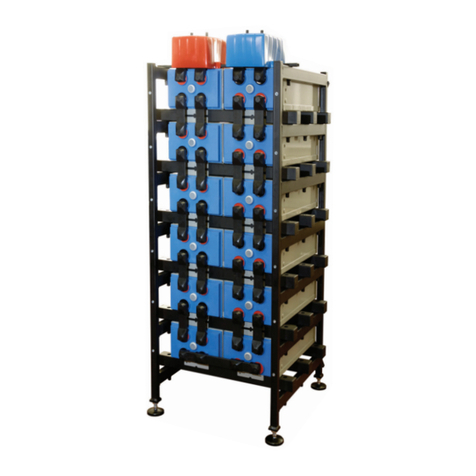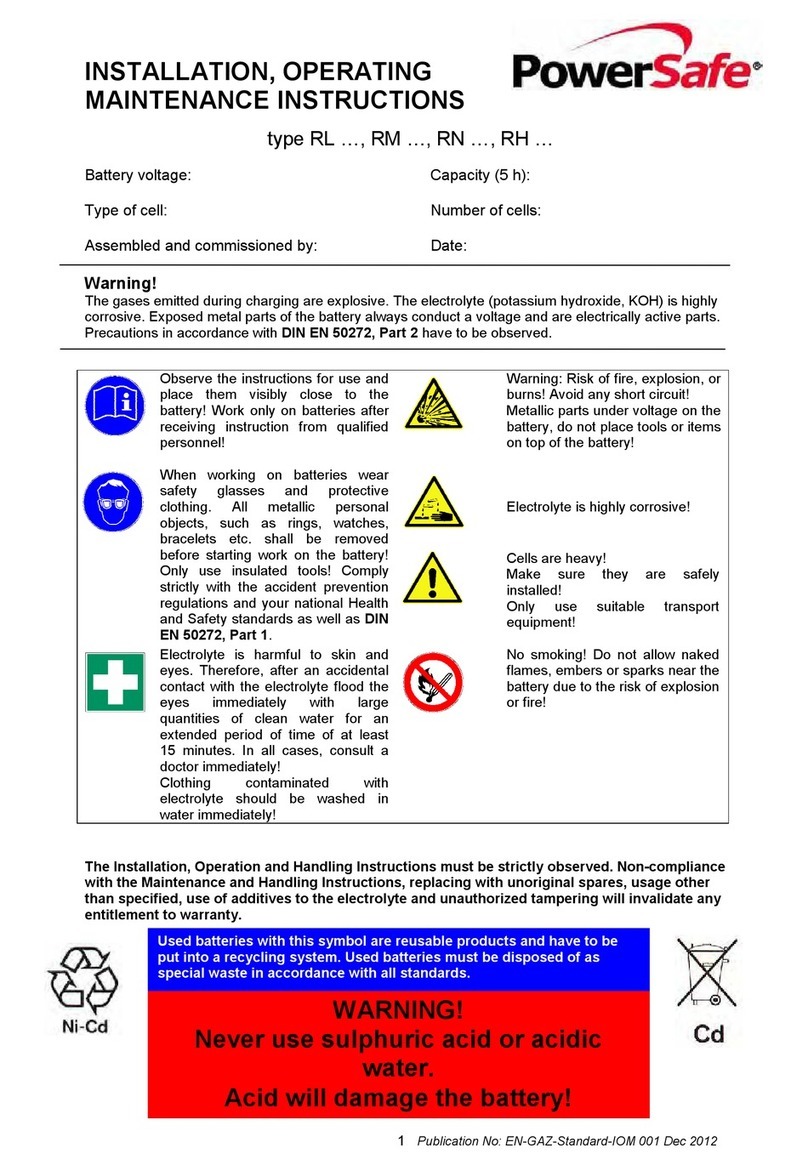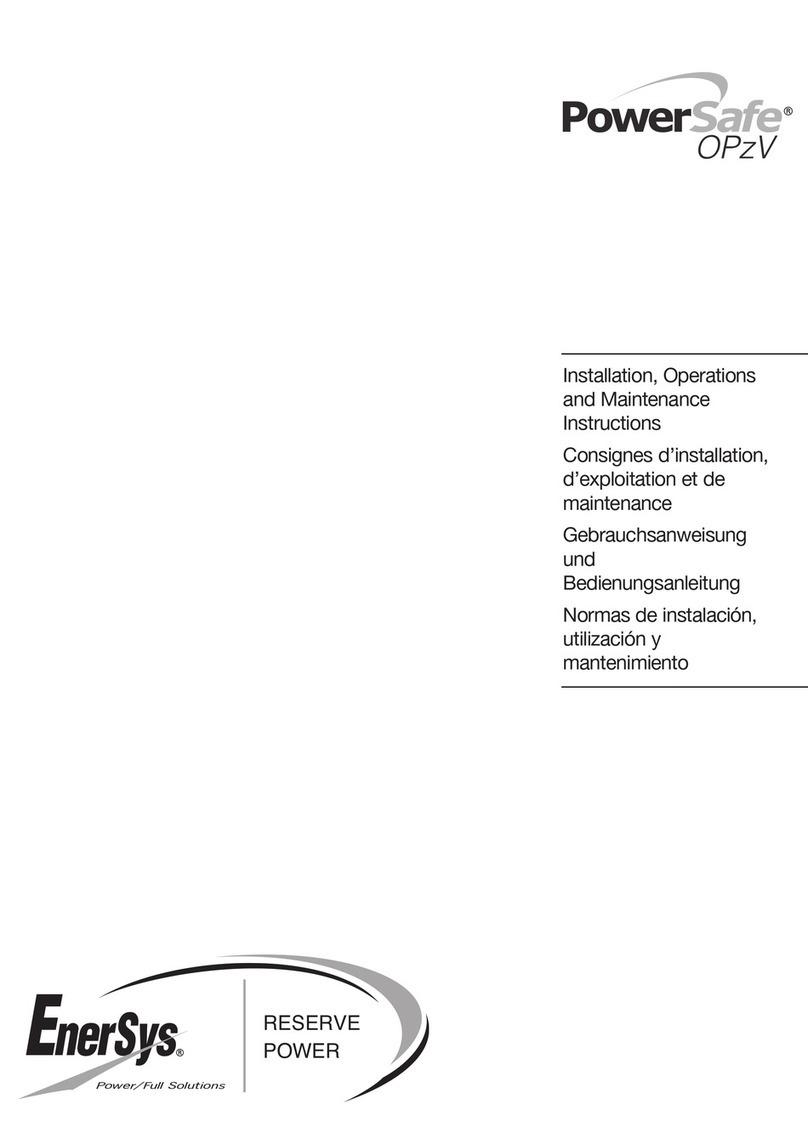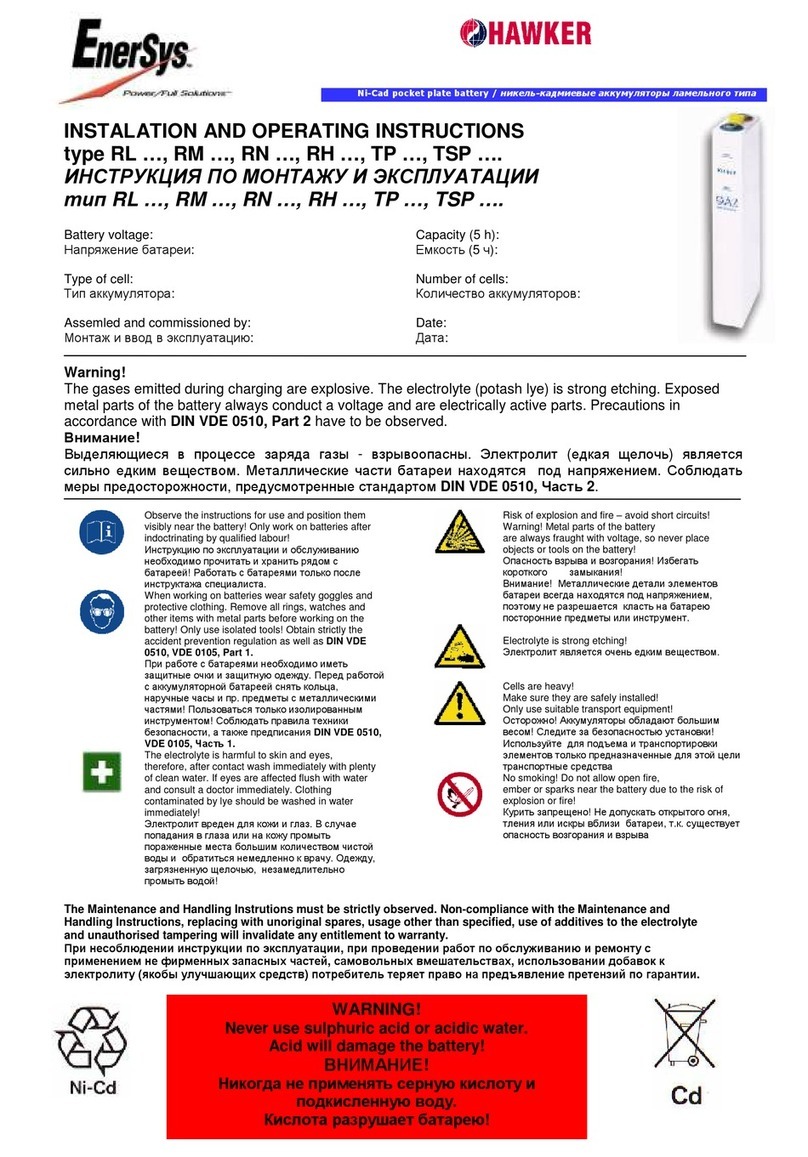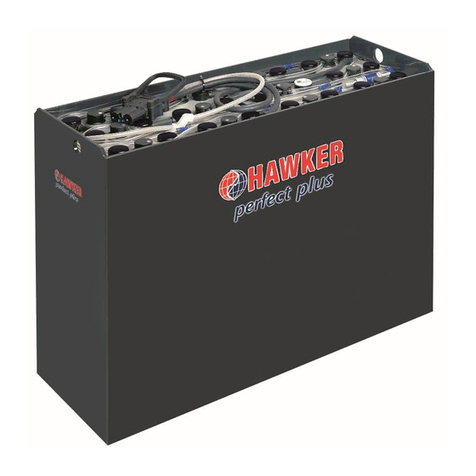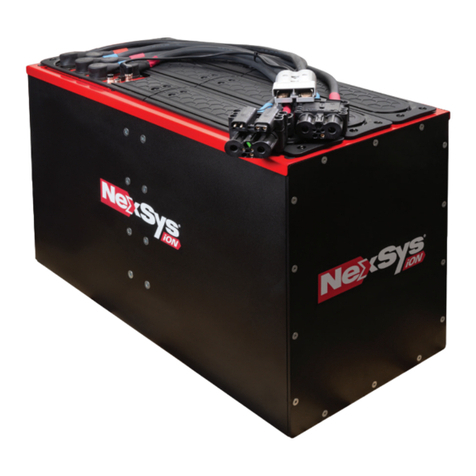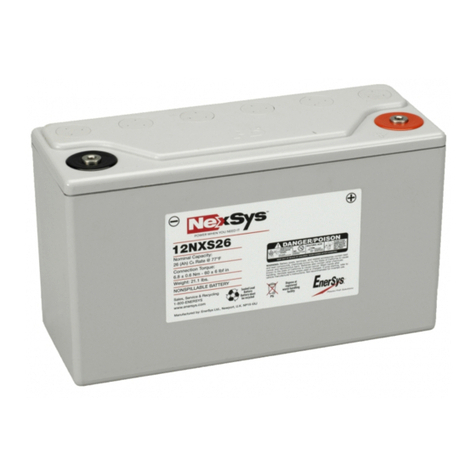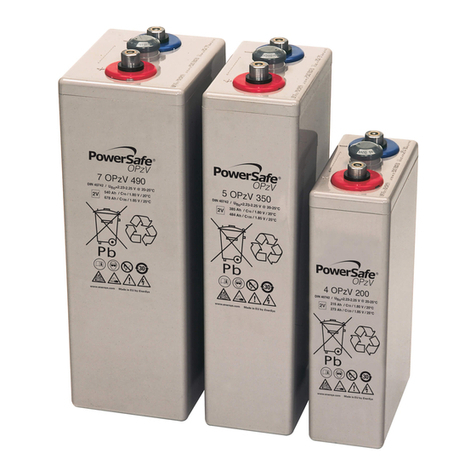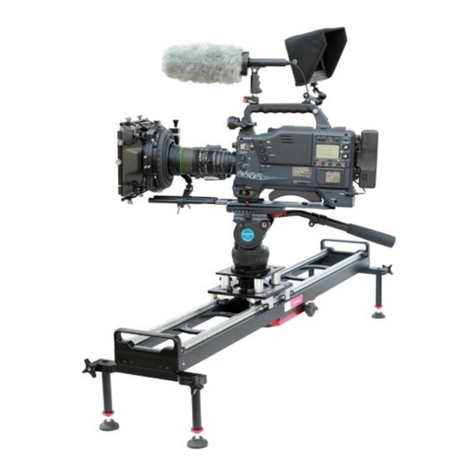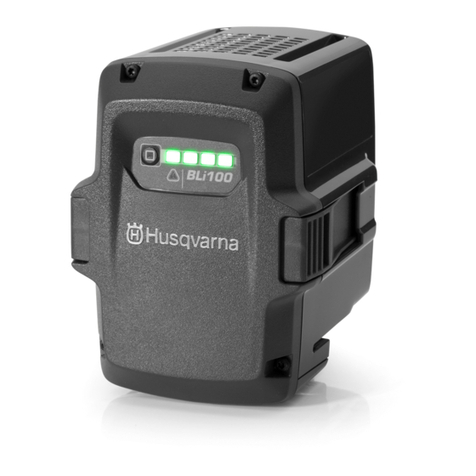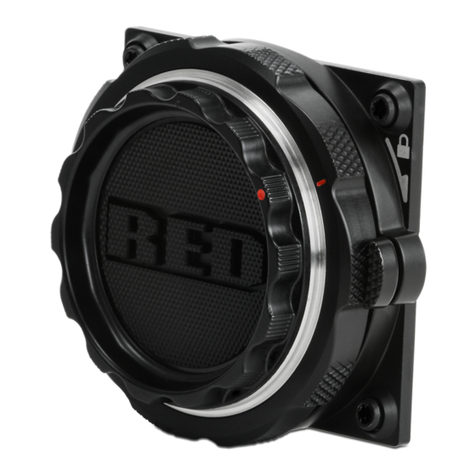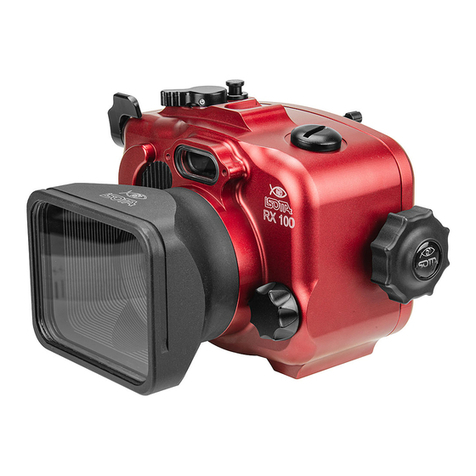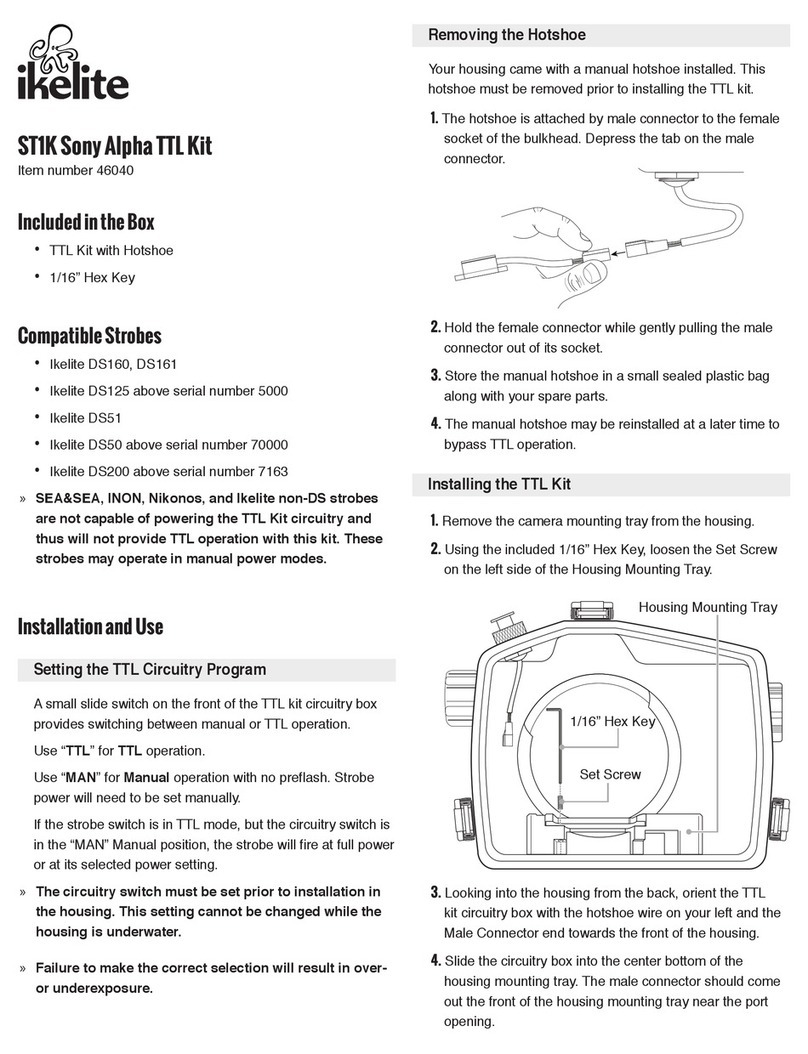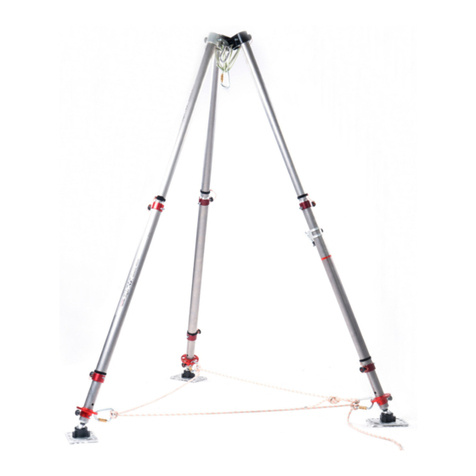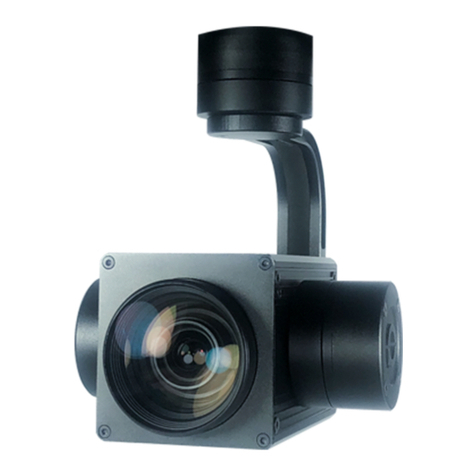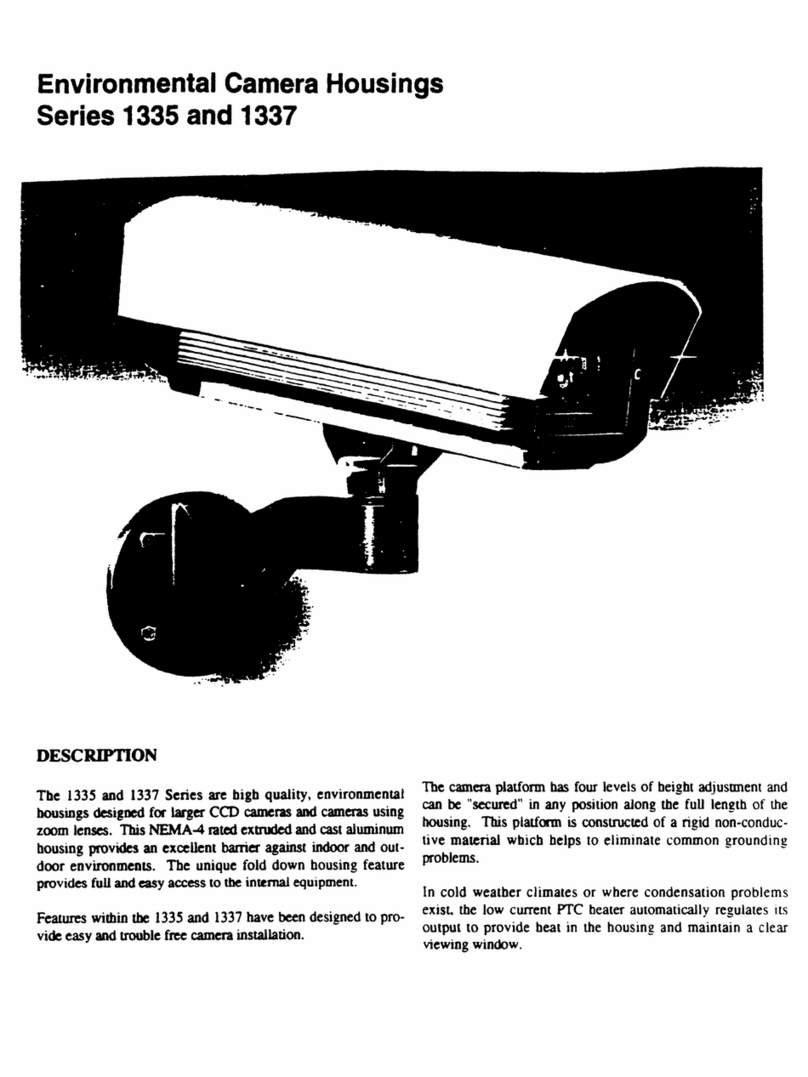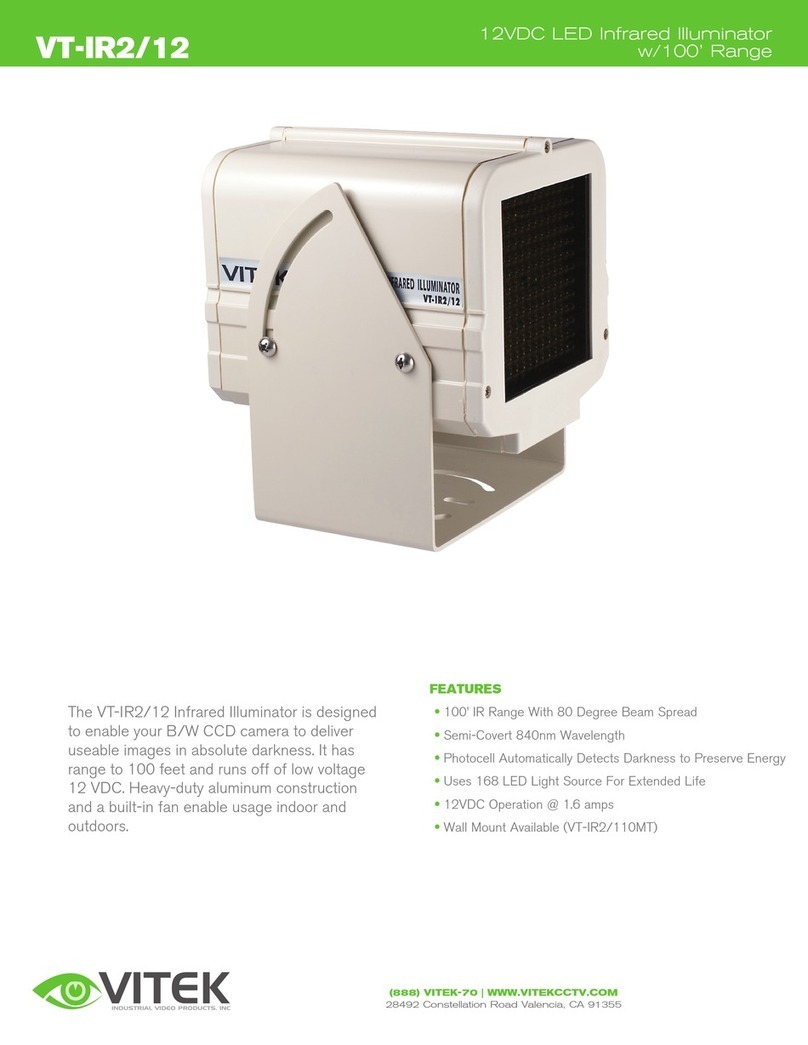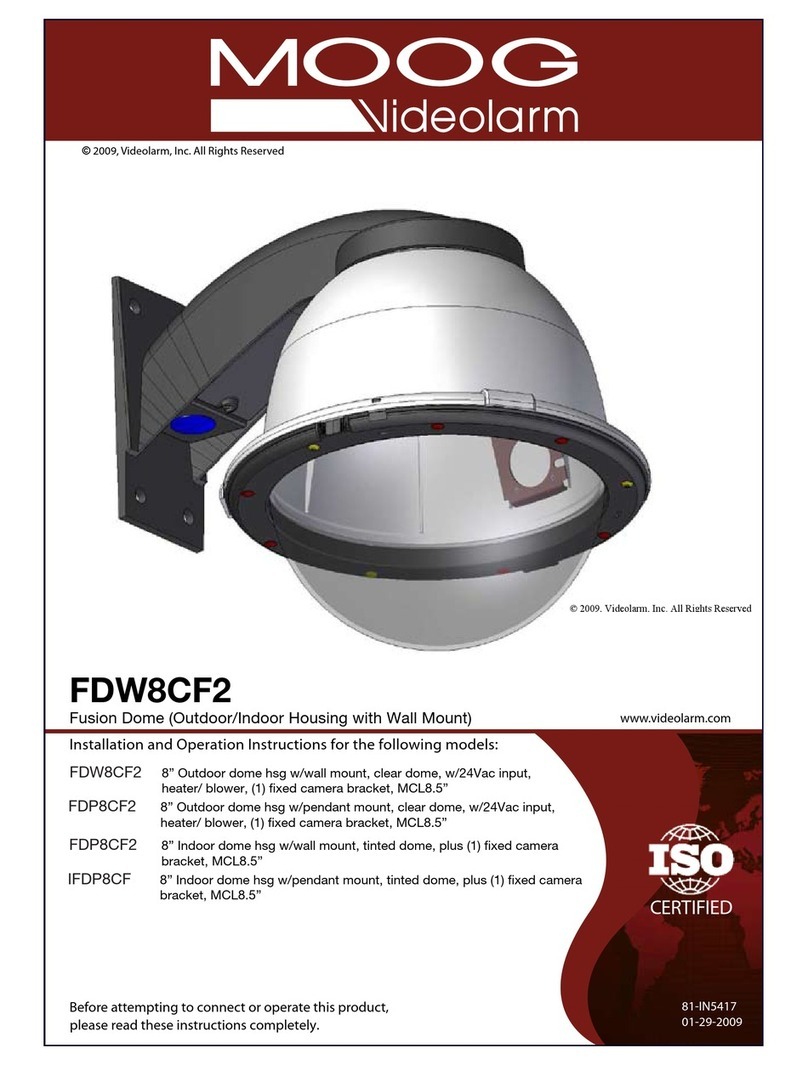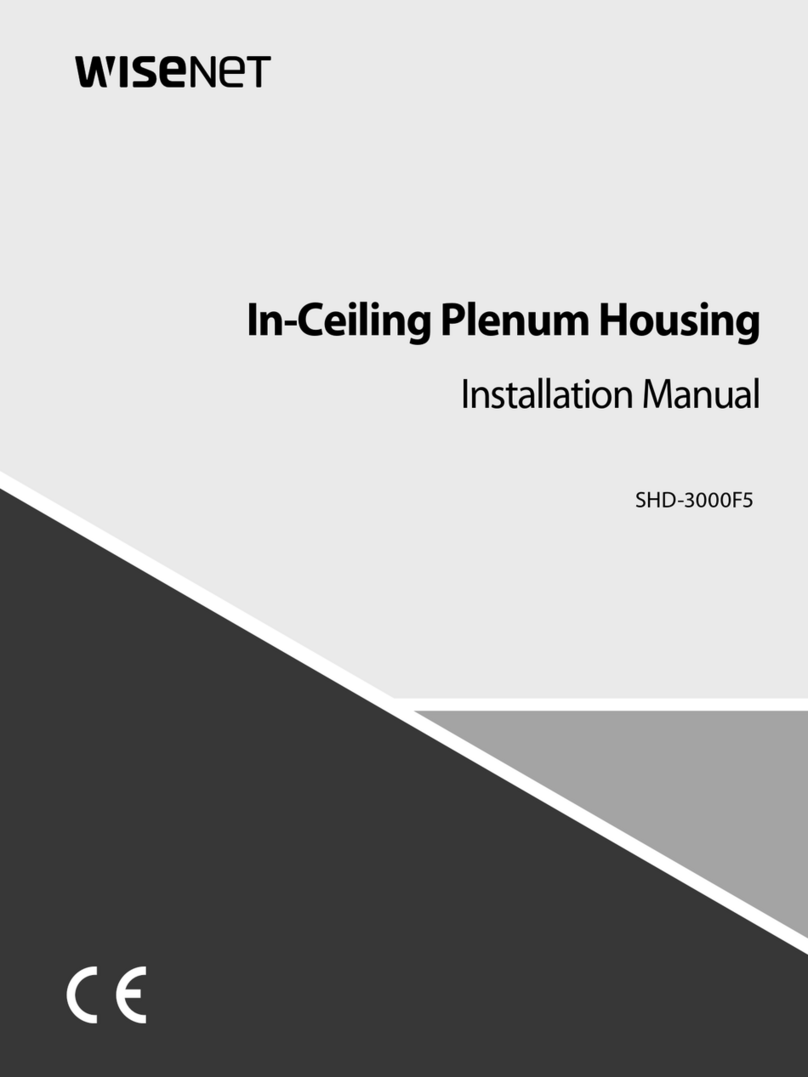
2.1 Discharging
The valves on the top of the battery must not be sealed or
covered. Electrical connections (e.g. plugs) must only be
made or broken in the open circuit condition. Discharges over
80% of the rated capacity are categorised as deep discharges
and are not acceptable as they reduce considerably the life
expectancy of the battery. Discharged batteries MUST be
recharged immediately and MUST not be left in a discharged
condition.
Note: The following statement only applies to partially
discharged batteries.
Discharged batteries can freeze. Limit the discharge to a
maximum of 80% DOD. The cycle life of the battery will
depend on the DOD, the higher the DOD, the shorter the
cycle life. The presence of a discharge limiter on the vehicle
is imperative.
The following energy cut-off settings must be used:
• 60%DOD1.96V
• 80%DOD1.92V
when discharged with currents in the range of I1to I5.
The battery is tted with a Low Voltage Alarm (LVA) and
the customer must observe the visual and audible warning
signals that the battery has reached its maximum discharge
level and must be charged immediately.
AtlowercurrentspleaseseekadvicefromEnerSys®Service.
2.2 Charging
NexSys®CORE batteries must be charged using NexSys or
Lifespeed iQ™ Modular chargers. These chargers MUST
be used on these batteries. Non respecting the matching
charges will invalidate any warranty. NexSys CORE batteries
are suitable for both standard duty applications as well as
heavy duty ones. In standard duty applications the charger
(0.2-0.25 charging rate) will recharge the battery from
80% depth of discharge in 6 hours and short opportunity
charges are allowed (up to 20% extra energy reintegrated
in 1 hour). The specific charging profile developed for
recharging NexSys CORE batteries allows a fast recharge
(0.26-0.4 C5) in less than 4 hours 60% DOD and opportunity
charging as often as needed without damaging the bat-
teries. Opportunity charge can be performed up to 80%
extra energy reintegrated (reintegration rate 40% in 1 hour).
Charging
Rate
from 80% DOD
-> Full charge
from 60% DOD
-> Full charge
from 40% SOC
-> 80%
from 40% SOC
-> 98% SOC
0.4 C54.6 4.1 1 2
0.32 C55 4.3 1.25 3.4
0.2 C56.25 5.25 2 4
NexSys CORE batteries have an extremely low gas emission
under normal circumstances. For safety purposes when
calculating gas emission levels, use 1.5A / 100Ah C5.
Nevertheless, provision must be made for venting of the
charging gases. Doors, battery container lids and the covers
of battery compartments must be opened or removed. With
the charger switched off, connect the battery to the charger,
ensuring that the polarity is correct (positive to positive, negative
to negative). Now switch the charger on. NexSys CORE batteries
must receive their full charge at least once a week.
2.3 Equalising charge
NeySysand LifespeediQ chargerswill automaticallyprovide
an equalising charge, following normal full charge (conditions
embedded into the profile).
3. Maintenance
The electrolyte is immobilised. The density of the electrolyte
can not be measured. Never remove the safety valves from
the cell. In case of accidental damage to the valve, contact
EnerSys service for replacement.
3.1 Daily
• Rechargethebatteryaftereverydischarge.
• Check the condition of the plugs, cables and that all
insulation covers are in place and in good condition.
3.2 Weekly
• Visualinspectionforsignsofdirtandmechanicaldamage
to all component parts of the battery, pay particular
attention to the battery charging plugs and cables.
3.3 Quarterly
At the end of the charge, carry out end of charge voltage,
readings, measure and record:
• Thevoltageofthecompletebattery
• Thevoltagesofeachcell
If significant changes from earlier measurements or
differences between the cells are found, please contact
EnerSys service. If the discharge time of the battery is not
sufficient, check:
• That the required work is compatible with the battery
capacity
• Thesettingsofthecharger
• Thesettingsofthedischargelimiteronthevehicle.
3.4 Annually
Remove internal dust from the battery.
Electrical connections: test all connections (sockets, cables,
and contacts). In accordance with EN 1175-1 at least once per
year, the insulation resistance of the truck and the battery
must be checked by an electrical specialist. The tests on
the insulation resistance of the battery must be conducted
in accordance with EN 1987-1. The insulation resistance
of the battery thus determined must not be below a value
of 50 Ω. per Volt of nominal voltage, in compliance with
EN 62485-3. For batteries up to 20 V nominal voltage the
minimum value is 1000Ω.
4. Care of the battery
The battery should always be kept clean and dry to prevent
tracking currents. Cleaning must be done in accordance
with the ZVEI code of practice “The Cleaning of Vehicle
Traction batteries”. Any liquid in the battery tray must
be extracted and disposed of in the prescribed manner.
Damage to the insulation of the tray should be repaired after
cleaning, to ensure that the insulation value complies with
EN 62485-3 and to prevent tray corrosion.
Call EnerSys service if it is necessary to remove cells.
Never use (apply ) mineral grease on the battery, the sealing
material of the terminal is incompatible and it can be per-
manently damaged. If it‘s necessary, use (apply) the silicone
greasewithTPFE.
5. Storage
Batteries are dispatched from the manufacturer in a fully
charged condition. The state of charge will decrease with
storage.Allbatterieslosetheirstoredenergywhenallowed
to stand open circuit, due to parasitic chemical reactions.
The rate of self-discharge is non-linear and decreases with
decreasing state of charge. It is also strongly inuenced by
temperature.
If the truck/vehicle is going to be unused for periods in excess
of 48 hours, the ignition key must be removed and any
auxiliary equipment (such as lights, beacons, on-board
computer etc) must be switched off. If the truck or battery
is going to be decommissioned for a period of 1 month or
longer, all electronic devices (such as Wi-iQ®, LVA) must be
professionally disconnected by EnerSys service – please
contact us for assistance.
High temperatures greatly reduce storage life.
Standard storage time for a battery not installed into a truck
is1monthwithoutneedtorecharge.Maximumstoragetime
is 6 months at 20°C provided the battery is fully charged
when put into storage and provided that all electronic devices
(LVA,Wi-iQ)orotherequipmentthatcouldcausethebattery
to discharge are disconnected. However, it is advisable to
conduct an inspection and open circuit voltage check after
3 months and implement a refresh charge if necessary.
6. Malfunctions
If malfunctions are found on the battery or the charger,
EnerSys service should be called in without delay. The
measurements taken in point 3.3 will facilitate fault finding
andtheirelimination.Aservicecontractwithuswillmakeit
easier to detect and correct faults in good time.




